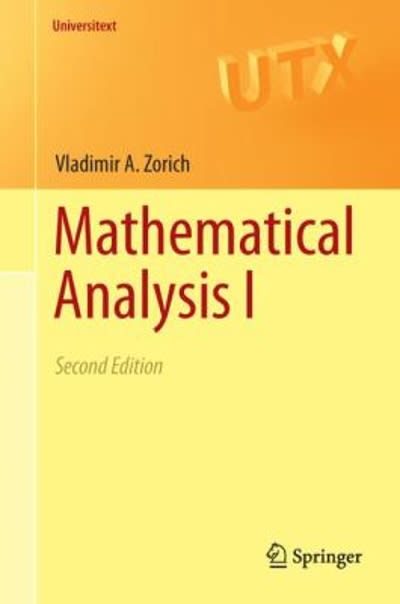Question
29.The Energy Star rating system is an energy efficiency program run by the U.S. Environmental Protection Agency (EPA). Energy Star certified appliances, such as televisions
29.The Energy Star rating system is an energy efficiency program run by the U.S. Environmental Protection Agency (EPA). Energy Star certified appliances, such as televisions and refrigerators, are rated in regard to their average energy consumption per year. A certain brand of Energy Star certified refrigerator is stated to have a mean yearly electricity cost of $102. A consumer advocacy organization believes that this claim is wrong, that the energy consumption of this particular refrigerator is different than $102 per year. The group collected a random sample of 20 refrigerators of the model in question and had each lab-tested for electricity consumption. The yearly energy consumption of each is given below.
| 102.32 | 101.53 | 102.63 | 101.99 | 101.72 | 102.88 | 101.03 | 101.6 | 102.4 | 101.83 |
| 101.84 | 102.19 | 101.29 | 101.58 | 102.97 | 101.12 | 101.99 | 101.88 | 102.72 | 101.28 |
Using =0.1=0.1, test the hypothesis that the average yearly electricity consumption of the refrigerator in question is different than $102 per year. Assume that the distribution of all electricity costs of this model of refrigerator is approximately normally distributed. Use the p-value method. State the null and alternative hypothesis for this test. H0:H0:? = > < p = p p p p > p < H1:H1:? = > < p = p p p p > p < Determine if this test is left-tailed, right-tailed, or two-tailed.
- right-tailed
- left-tailed
- two-tailed
Should the standard normal (z) distribution or Student's (t) distribution be used for this test?
- The standard normal (z) distribution should be used
- The Student's t distribution should be used
Determine the test statistic for the hypothesis test. Round the solution to four decimal places. Determine the p-value (range) for the hypothesis test.
- p-value < 0.001
- 0.001 < p-value < 0.01
- 0.01 < p-value < 0.02
- 0.02 < p-value < 0.05
- 0.05 < p-value < 0.10
- 0.10 < p-value < 0.20
- p-value > 0.20
Determine the appropriate conclusion for this hypothesis test.
- The sample data do not provide sufficient evidence to reject the null hypothesis that the mean electricity cost of this model refrigerator is $102 per year and thus we conclude that it is likely the true mean electricity cost per year is $102.
- The sample data do not provide sufficient evidence to reject the alternative hypothesis that the mean electricity cost per year of this model refrigerator is different than $102 and thus we conclude that the mean yearly electricity cost of this refrigerator is likely different than $102.
- The sample data provide sufficient evidence to reject the null hypothesis that the mean electricity cost of this model refrigerator is $102 per year and thus we conclude that it is likely the true mean electricity cost per year is different than $102.
- The sample data provide sufficient evidence to reject the alternative hypothesis that the mean electricity cost per year of this model refrigerator is different than $102 and thus we conclude that the mean yearly electricity cost of this refrigerator is likely $102.
Step by Step Solution
There are 3 Steps involved in it
Step: 1

Get Instant Access to Expert-Tailored Solutions
See step-by-step solutions with expert insights and AI powered tools for academic success
Step: 2

Step: 3

Ace Your Homework with AI
Get the answers you need in no time with our AI-driven, step-by-step assistance
Get Started


